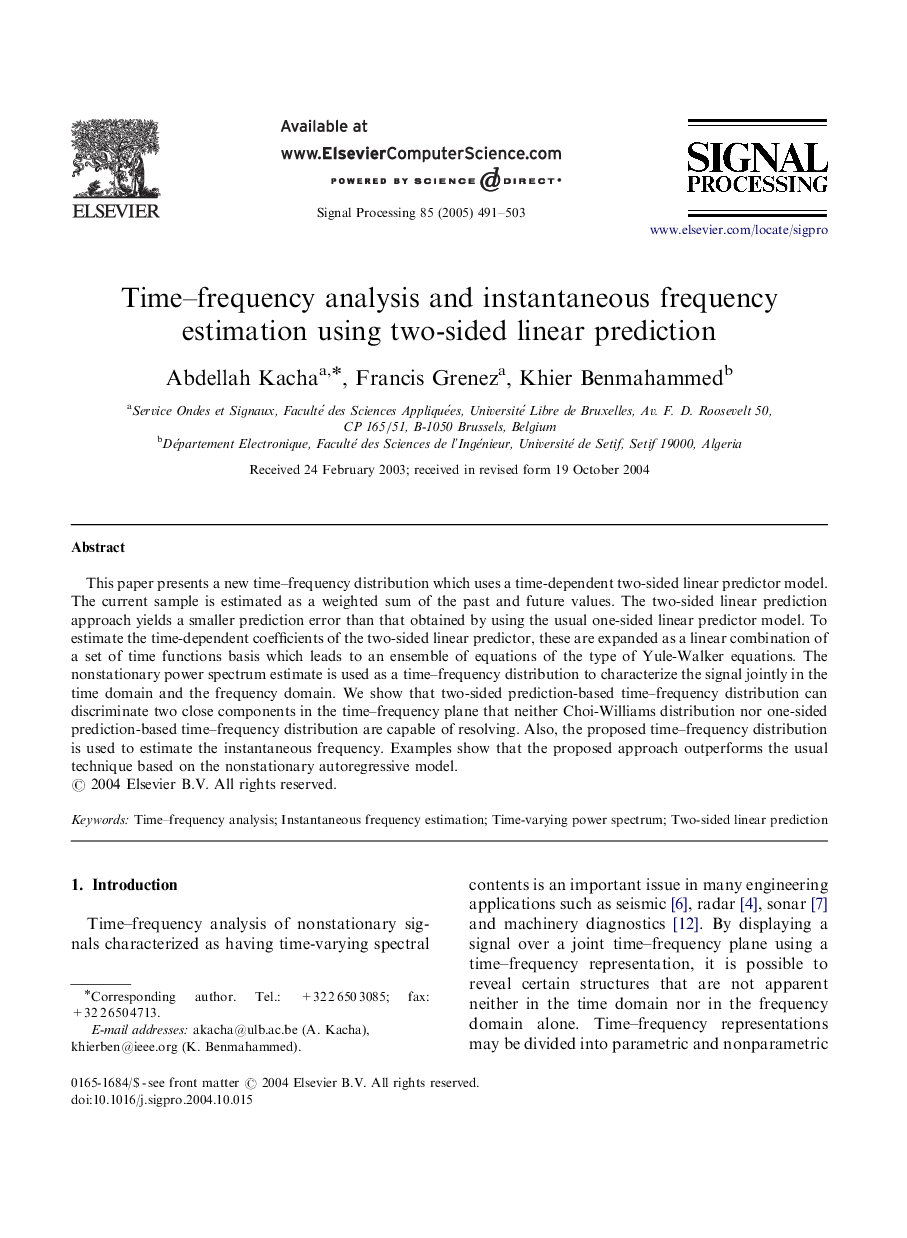| Article ID | Journal | Published Year | Pages | File Type |
|---|---|---|---|---|
| 10369973 | Signal Processing | 2005 | 13 Pages |
Abstract
This paper presents a new time-frequency distribution which uses a time-dependent two-sided linear predictor model. The current sample is estimated as a weighted sum of the past and future values. The two-sided linear prediction approach yields a smaller prediction error than that obtained by using the usual one-sided linear predictor model. To estimate the time-dependent coefficients of the two-sided linear predictor, these are expanded as a linear combination of a set of time functions basis which leads to an ensemble of equations of the type of Yule-Walker equations. The nonstationary power spectrum estimate is used as a time-frequency distribution to characterize the signal jointly in the time domain and the frequency domain. We show that two-sided prediction-based time-frequency distribution can discriminate two close components in the time-frequency plane that neither Choi-Williams distribution nor one-sided prediction-based time-frequency distribution are capable of resolving. Also, the proposed time-frequency distribution is used to estimate the instantaneous frequency. Examples show that the proposed approach outperforms the usual technique based on the nonstationary autoregressive model.
Related Topics
Physical Sciences and Engineering
Computer Science
Signal Processing
Authors
Abdellah Kacha, Francis Grenez, Khier Benmahammed,
